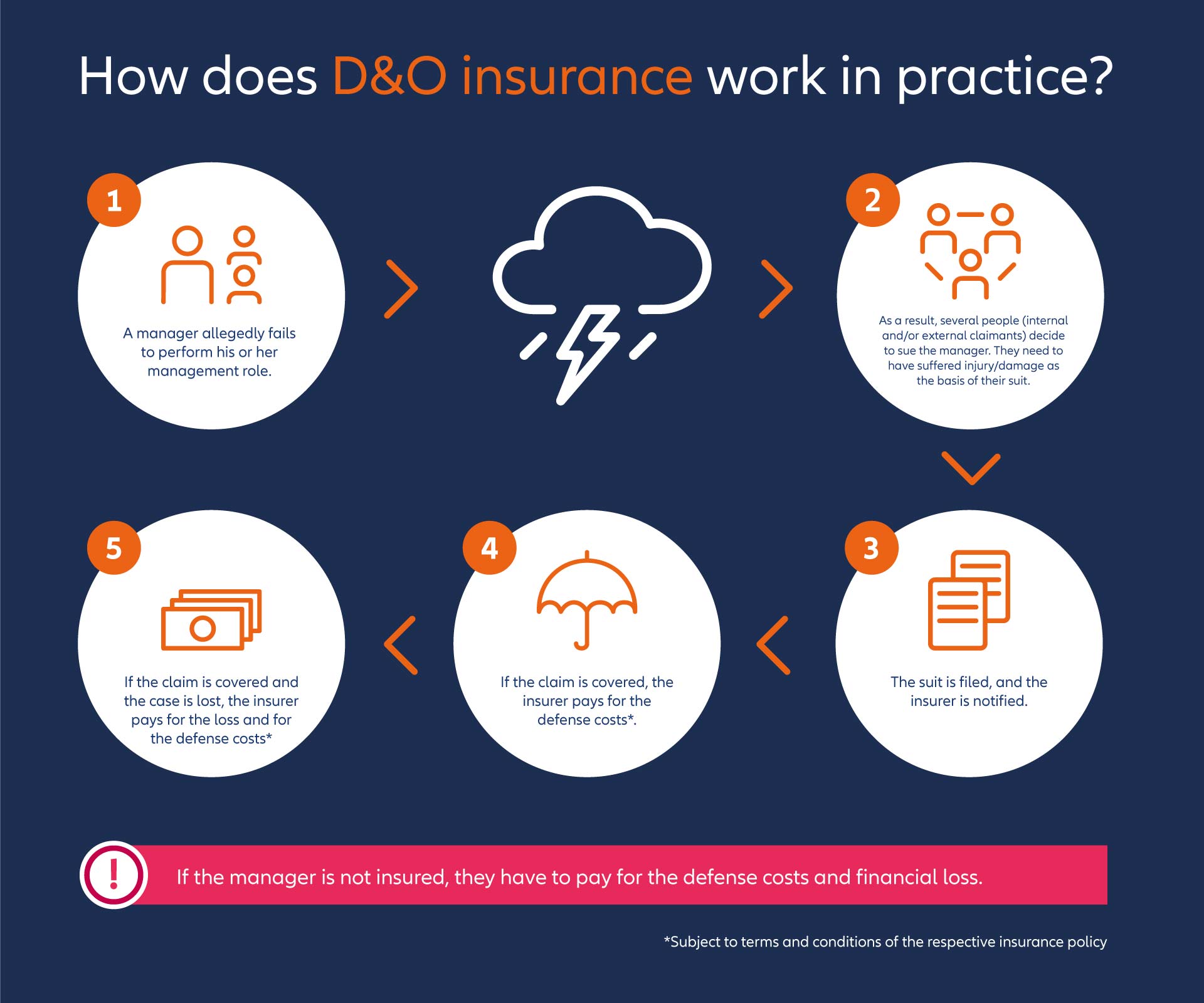What is D&O insurance?
Directors and Officers insurance (D&O insurance) policies offer liability coverage for company managers to protect them from claims which may arise from decisions and actions taken as part of their duties. Today’s increasingly complex legal environment means businesses face a heightened prospect of liabilities and litigations, often driven by “adverse news events”. Companies usually purchase D&O insurance because lawsuits are expensive, and the costs associated with them are rising. Moreover, if companies do not have a good D&O insurance program in place it is unlikely that they will be able to attract top managerial talent, given the potential risks involved.
D&O insurance reimburses the defense costs incurred by board members, managers, and employees in defending against claims made by shareholders or third parties for alleged wrongdoing. D&O insurance also covers monetary damages, settlements, and awards resulting from such claims. If the company cannot indemnify its directors, officers, or employees for amounts resulting from these claims, D&O insurance will step in to directly pay those costs – protecting the individual’s personal assets. If the company indemnifies the individual for such costs, D&O insurance will reimburse the company for such indemnity. The D&O policy will also provide some coverage for the company itself if it is sued.
D&O insurance in practise

Coverage is usually for current, future, and past directors and officers of a company and its subsidiaries. D&O insurance covers the individual for acts performed or omitted while in that position with the company. This means that even if the individual is no longer a board member, if a claim is made during the policy period against them for alleged wrongdoing as a board member, they will still be covered under the policy in force while the claim is made. D&O insurance policies do not cover deliberately fraudulent or criminal actions.
D&O insurance raises many important questions for companies to consider: How much coverage is enough? What and who is covered – and what is not? Should small-to-medium sized enterprises (SMEs) buy D&O? What does a typical D&O insurance program look like? How can risk management protect officers from the many perils they face in today’s business environment?
What do common D&O risk scenarios include or exclude?
Common D&O risk scenarios include:
Common D&O exclusions include:
D&O insurance structure
Swipe to view more
|
Cover
|
Insurance Description
|
Who is the insured?
|
What is at risk?
|
|---|---|---|---|
|
Side A: Non-Indemnifiable Loss |
Pays on behalf of the insured person loss that is not indemnified resulting from a claim against the insured person. | Individual officer | His/her personal assets |
| Side B: Indemnifiable Loss | Pays on behalf of the company loss that is indemnified resulting from a claim against the insured person. | Company | Corporate assets |
|
Side C: Entity Coverage |
Pays on behalf of the company loss that is incurred resulting from a claim against the company. (Outside of the US and for US public companies, this is only securities claims; in the US, for private companies and investment advisers, this is claims against the company, not limited to securities) | Company | Corporate assets |
D&O insurance coverage has become a regular cover for large multinational companies, but all sizes of organizations – public, private or non-profit – have potential exposures.
There is increasing demand for SME D&O cover, though penetration is still low due to lack of awareness and education. Smaller companies may not think they are ‘big enough’ for D&O insurance but this is not necessarily true. Lawsuits are increasingly costly, and for a smaller or mid-size company, a single litigation can be a huge financial burden. D&O cover can be tailored to meet the needs of SMEs, with lower retentions and lower limits.
How D&O works: excess layer structures


Larger programs with limits over $30mn are usually too large for one insurer and require a group of insurers to share the risks. In this case, the primary or lead insurer will handle the wordings, advise on setting up an international insurance program (see below) and settle claims.
The primary insurance carrier provides the “primary layer” of D&O coverage, for example, $30mn. Once the primary limit of liability is exhausted by payment of loss, the next layer kicks in, up to a certain amount, and so on. As the first policy to respond to a claim, the primary insurer carries the greatest risk exposure, therefore primary policy premiums are higher and typically reduce higher up the tower.
Another way to risk-share is through proportional coinsurance, also known as quota share. With this arrangement, insurers will essentially split an excess layer, and the premium is proportionally allocated depending on each insurer’s percentage of the risk. Claims would be settled likewise.
International programs
What is covered?
- Allegation of a wrongful act
- Costs and expenses of an insured e.g defense costs
- Financial losses where the insured is held liable
Six steps to structuring an insurance program
- Benefit from the degressive nature of insurance pricing. Large towers offer great value for premium money, as the price per unit of capacity becomes cheaper the higher the tower.
- Consider special and dedicated protection for the natural insured persons that cannot be eroded by entity coverage elements and still works in case the entity can no longer indemnify (dedicated Side A tower sitting excess of ABC or separate Side A coverage).
- Diversify your program. A tower consisting of many carriers with small limits is much more stable than the same tower consisting of few carriers with large limits.
- Make sure you have an international insurance program in place to ensure cohesive global coverage.
- Confirm that the claims department of the primary carrier has successfully settled large claims. What is their claims protocol in general? Meet with claims people as well as with underwriters.
- Don't overload policies with too many (exotic) “extras”. Make sure you have a sufficient limit available for your main risks rather than limits for extras you may not use.















